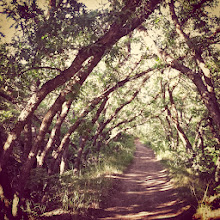
Since he just celebrated his 140th Birthday, I thought Mr. Mucha deserved a post... well, and because he's one of my biggest inspirations ever.


Second only to my love of Art Deco is Art Nouveau, the highly organic and decorative style of art which was popular throughout Europe at the turn of the 20th Century, inspiring everything from art and architecture, to fashion. If Erté was the "father" of Art Deco--the more stark and geometrically patterned movement, Alphonse Mucha was probably the closest thing to a "father" of Art Nouveau there is.


Despite this fact, Mucha tried to disconnect himself from the term "nouveau" as much as he could believing art itself should be an eternal expression born of spiritual inspiration, rather than a "new" fad or trend. He always claimed his inspiration came from the folk art of his nation and was intended for his people, rather than something that belonged to any school of thought.


Born in the Czech Republic in 1860, Alphonse was raised in small, traditional community which engrained in him a deep religious devotion, and strong identity of Slav nationalism all his life. His first love was art and drawing, and he was very influenced by the works of art he witnessed in local churches.


Despite Mucha's verging talent he was rejected admittance into the Prague Academy of Fine Arts, so at 19 he moved to Vienna to work for a theatrical design company. After his employer went bankrupt, Mucha returned to Moravia to do freelance work and was hired by the Count Khuen to decorate his castle with murals. Oooh. He was so impressed with his work that the Count decided to patronize Mucha's education at the Munich Academy of Fine Arts.


In 1887, Mucha moved to Paris to continue his studies, producing magazine and advertising illustrations to support himself. One day around Christmas, 1894, Mucha happened to walk into a print shop the moment there was a drastic need for a new advertising poster for a play starring Sarah Bernhardt, the most famous actress in Paris. Mucha volunteered to do the poster himself, and within two weeks it was posted over all the streets of Paris making Mucha and his style an overnight sensation. What destiny!

“If anyone is destined to become an artist and follows this career led by a mysterious and irresistible force, then it is Mucha. . . . He submits without argument, as he himself says, to the commands of this watchful, protective force which propels him through life as if he were sleepwalking, placing before his feet at decisive moments the stops to success.” - Victor Champier

The actress Bernhardt was so taken with the poster that she entered into a 6 year contract with Mucha, launching him into a flurry of fame and high demand for designing everything from paintings, posters, advertisements, and theatre sets, to jewelry, carpets, wallpaper, and even stained-glass windows.



Ironically enough, it wasn't fame through commercial art that Mucha wanted, rather he desired respect--as a Czechoslovakian artist who created art with significance and meaning for his struggling people. One such attempt Mucha considered to be his printed masterpiece was, Le Pater; an occult examination of the Lord's Prayer of which Mucha "poured his soul into".

One other such attempt was The Slav Epic, a series of 20 huge paintings depicting the history of the Slavanian and Czech people which he spent years on without pay, and finally donated to the Slav people. They were received with generally negative reviews because they did not appear traditional enough in execution for such themes, which was ironically a foreign aesthetic. In all actuality Mucha had created something entirely fresh and of his own doing, yet his people interpreted his style as "french", and his character as "sold-out".


Even today Mucha has not been entirely embraced by his nation, yet there is a museum in Prague operated by his grandson which displays his work. Today Mucha is much more popular in the West where his work is celebrated for it's lively and flowering beauty, warm tones, stylized utility, and themes of nature and the exotic. To me even his commercial works are incandescent and hint of something transcendently divine. I just hope one day Czechoslovakians will find room in their national identity for their ever-devoted artist Alphons Mucha.
~S











